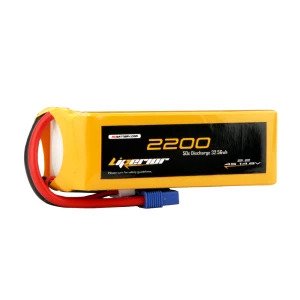Remote control (RC) enthusiasts know that the heart of any high-performance RC vehicle is its battery. Among the various types available, LiPo (Lithium Polymer) batteries stand out for their superior power and efficiency. This article delves into the world of RC LiPo batteries, highlighting the best options on the market, essential maintenance and safety tips, and real-world experiences to help you make informed decisions for your RC adventures.
What Are RC LiPo Batteries?
Composition and Technology
RC LiPo batteries are made from lithium-ion technology encased in a flexible polymer shell. This construction allows them to be lighter and offer higher energy densities compared to traditional NiMH or NiCd batteries. The flexibility in design also means they can fit into a variety of shapes, making them ideal for different RC vehicles.
Advantages Over Other Battery Types
The primary advantages of LiPo batteries include:
- Higher Energy Density: More power in a lighter package.
- Better Discharge Rates: Provides the necessary power bursts for high-performance maneuvers.
- Flexibility in Design: Can be manufactured in various shapes and sizes.
How RC LiPo Batteries Work
Basic Principles
LiPo batteries operate on the same basic principles as other lithium-ion batteries. They consist of an anode, cathode, and electrolyte. During discharge, lithium ions move from the anode to the cathode, creating an electric current. Charging reverses this process, moving ions back to the anode.
Charging and Discharging Cycles
Understanding the charging and discharging cycles of LiPo batteries is crucial. Each cycle refers to a full charge and discharge, and the battery’s lifespan is measured in these cycles. Proper charging techniques and avoiding deep discharges can significantly extend the life of your LiPo batteries.
Best RC LiPo Batteries for High Performance
Top 5 Brands to Consider
- RC Battery: Known for reliability and long lifespan.
- Venom Power: Offers a wide range of sizes and capacities.
- Turnigy: Affordable and popular among hobbyists.
- Zeee Power: High-performance and budget-friendly.
- HRB: Excellent balance of power and cost.
Key Features and Specifications
When selecting a LiPo battery, consider the following specifications:
- Capacity (mAh): Determines how long the battery can run.
- Voltage (V): Affects the power output; higher voltage means more power.
- C Rating: Indicates the discharge rate; a higher C rating means the battery can provide more power in a shorter time.
Choosing the Right Battery for Your RC Vehicle
Compatibility Factors
Not all LiPo batteries are suitable for every RC vehicle. Compatibility factors include:
- Size and Shape: Ensure the battery fits your vehicle’s battery compartment.
- Connector Type: Match the battery’s connector with your vehicle’s connector.
- Voltage and Capacity: Choose based on your performance needs and vehicle specifications.
Performance Needs and Preferences
Your choice should reflect your driving style and the type of RC vehicle you have. For high-speed racing, a battery with a high discharge rate is essential. For longer endurance runs, opt for higher capacity batteries.
Ensuring Longevity of Your RC LiPo Batteries
Proper Charging Techniques
Proper charging is crucial for the longevity of LiPo batteries. Always use a charger designed for LiPo batteries and follow these tips:
- Charge at the Correct Rate: Avoid charging at too high a rate; it’s safer to charge at 1C (one times the battery’s capacity).
- Balance Charging: Use a balance charger to ensure all cells are charged equally.
- Avoid Overcharging: Overcharging can damage the battery and pose a safety risk.
Storage Guidelines
Storing LiPo batteries correctly can extend their lifespan. Here’s how:
- Storage Voltage: Store batteries at around 3.7-3.8V per cell.
- Temperature: Keep batteries in a cool, dry place. Avoid extreme temperatures.
- Regular Checkups: Periodically check the voltage and condition of stored batteries.
Safety Precautions to Follow
Handling and Usage
Handling LiPo batteries with care is essential for safety:
- Inspect Regularly: Check for any damage or swelling.
- Avoid Physical Damage: Do not puncture or bend the batteries.
- Use Fireproof Bags: Store and charge batteries in fireproof LiPo bags.
Emergency Procedures
In case of an emergency, such as a battery catching fire:
- Fire Safety: Have a fire extinguisher or sand nearby.
- Disposal: Dispose of damaged batteries according to local regulations.
Maximizing Battery Life and Efficiency
Tips for Optimal Usage
To get the most out of your LiPo batteries:
- Avoid Over-Discharging: Stop using the battery once it reaches the low-voltage cutoff.
- Temperature Management: Keep the battery cool during use and charging.
- Regular Maintenance: Clean connectors and check for signs of wear.
Common Mistakes to Avoid
Avoid these common pitfalls:
- Leaving Batteries Fully Charged: Store at the recommended storage voltage instead.
- Using Damaged Batteries: Always replace damaged batteries.
- Improper Storage: Avoid high humidity and temperature extremes.
Upgrading Your RC Vehicle’s Power
Selecting the Right Upgrades
Choosing the right upgrades can enhance your RC vehicle’s performance:
- Higher Voltage Batteries: For more speed.
- High-Capacity Batteries: For longer run times.
- Quality Chargers: Ensure efficient and safe charging.
Balancing Power and Weight
Consider the trade-off between power and weight:
- Lightweight Batteries: Improve agility and speed.
- Higher Capacity: Provides more power but adds weight.
Real-World Experiences and Testimonials
RC Enthusiasts Share Their Stories
Experienced RC enthusiasts offer valuable insights:
- Case Studies: Detailed accounts of battery performance in different scenarios.
- Reviews: Honest opinions on various brands and models.
Performance Comparisons
Comparative reviews can help you choose the best battery:
- Head-to-Head Tests: Compare performance metrics like run time, power output, and durability.
The Future of RC LiPo Batteries
Innovations on the Horizon
The future looks promising with advancements such as:
- Improved Energy Density: More power in smaller packages.
- Faster Charging: Reduced charge times without compromising battery life.
- Enhanced Safety Features: New technologies to minimize risks.
Sustainable Practices and Developments
Environmental concerns are driving sustainable practices:
- Recycling Programs: Increasingly available for LiPo batteries.
- Eco-Friendly Materials: Research into less harmful materials for battery production.
Conclusion
Choosing the right RC LiPo battery is crucial for maximizing your RC vehicle’s performance. By understanding the technology, selecting the best brands, and following proper maintenance and safety guidelines, you can enjoy powerful and precise drives. Stay informed about the latest advancements and real-world experiences to keep your RC adventures thrilling and safe.
FAQs
- What makes LiPo batteries the best choice for RC vehicles?
- LiPo batteries offer higher energy density, better discharge rates, and flexible design options, making them ideal for high-performance RC vehicles.
- How do I safely charge my RC LiPo battery?
- Use a charger designed for LiPo batteries, charge at the correct rate, balance charge, and avoid overcharging.
- Can I use any LiPo battery with my RC vehicle?
- Ensure compatibility by checking the size, shape, connector type, voltage, and capacity of the battery.
- What should I do if my RC LiPo battery gets damaged?
- Handle damaged batteries with care, follow safety protocols, and dispose of them according to local regulations.
- How can I extend the life of my RC LiPo battery?
- Proper maintenance, storage at the correct voltage, and avoiding over-discharging can help extend the battery’s lifespan.
- Are there any environmental concerns with using LiPo batteries?
- Yes, proper disposal and recycling are essential to minimize environmental impact. Many manufacturers are also exploring eco-friendly materials for battery production.
By following these guidelines and staying informed, you can make the most of your RC LiPo batteries, ensuring both powerful performance and long-lasting reliability.



